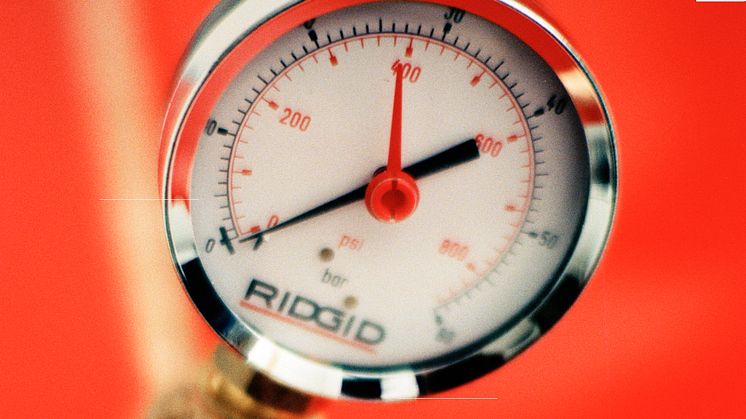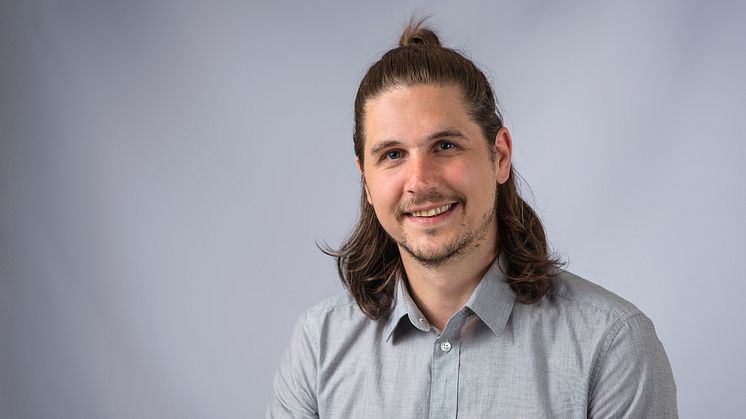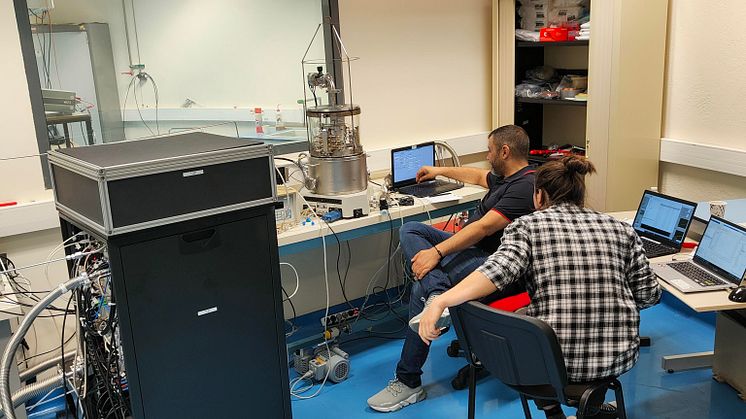
Press release -
New method measures pressure with high precision
A newly developed instrument makes it possible to measure gas pressure by using laser light. The method, developed at Umeå University and the Industrial Doctoral School for Research and Innovation, provides very precise measurements and can, for example, quickly detect extremely small gas leaks.
Our ability to define and realise what are known as the SI units – such as the metre, the second and the kilogram – with high accuracy is becoming increasingly important in our global society. How long one metre is or how much one kilogram weighs is something we take for granted, but is in fact under constant supervision and development by national metrology institutes around the world. One of their tasks is to ensure the quality of our measuring instruments so that people can, with confidence, shop for groceries, refuel their cars or set their watches.
In his doctoral thesis, Clayton Forssén, a doctoral student at the Industrial Doctoral School for Research and Innovation, presents a new way of realising the SI unit for pressure, the pascal, which is both precise and accessible. The research was conducted in collaboration with RI:SE Research Institutes of Sweden, which is home to the Swedish National Metrology Institute.
Contributing to safer workplaces
“Unlike the traditional method of realising pressure by applying a known force on a known area, the new method is based on Boltzmann’s constant and an exceptionally accurate laser measurement of gas density,” says Clayton Forssén.
The new instrument enables a better global definition for pressure, as well as the development of future solutions in areas such as healthcare, industry or research where knowledge of precise and accurate pressure is a fundamental requirement. For example, some areas of use include the accurate dosing of drugs in medical applications or the handling of hazardous gases in industry. Using the new instrument, extremely small gas leaks can be detected in real time, contributing to greater safety when working with explosive or toxic gases.
Sensitive instruments
These types of instruments are often sensitive and therefore difficult to move outside the lab. However, Clayton Forssén has succeeded in creating a portable instrument that can measure pressure with very high precision even outside well-controlled environments. This makes it possible to bring the technology into society and ensure that it benefits more applications.
“Applying a realisation for pressure directly can eliminate the need for calibrations, which is very costly but above all carries a high price for the environment,” says Clayton Forssén.
“Working with experts on realisations for the SI units across Europe has been incredibly rewarding. I’ve seen how much work goes into developing and quality assuring these devices, all with the aim of minimising the impact on us as individuals in society. Being able to contribute to this work that is focused on improving the future of the global community is, of course, something I take great pride in,” he concludes.
Clayton Forssén grew up outside Örnsköldsvik and worked as an electrician before starting his studies at Umeå University. Clayton Forssén holds a Master of Science in Engineering Physics with a specialisation in experimental space physics. Immediately after graduation, Clayton Forssén began his doctoral studies, and is now presenting his work in this doctoral thesis.
About the defence of the doctoral thesis
On Monday, 2 October, Clayton Forssén, Department of Physics at Umeå University, defended his doctoral thesis entitled Fabry-Pérot based refractometry, development of a transportable refractometer for assessment of gas pressure. The external reviewer was Docent Leslie Pendrill, Senior Researcher, RI:SE Research Institutes of Sweden, Measurement Technology.
About the Industrial Doctoral School
The Industrial Doctoral School at Umeå University is based on collaboration between the University, researchers and businesses or organisations. The aim is to combine benefits for both society and the external party while training new high-quality researchers. The doctoral student also receives a tailored academic course package. The doctoral school is open to all disciplines and the doctoral student is employed at Umeå University.
Read more on the Industrial Doctoral School website
For more information, please contact:
Clayton Forssén, doctoral student at the Industrial Doctoral School and the Department of Physics at Umeå University
Phone: +46 76 84 68 333
Email: clayton.forssen@umu.se
Photo caption "NMI Paris": Clayton Forssén visited the National Metrology Institute in Paris during his work. The picture shows a conventional pressure standard in the middle, the current realization of the SI unit for pressure. On the left is the portable instrument built by Clayton Forssén. Photo: Zaccaria Silvestri
Topics
Categories
Umeå University
Umeå University is one of Sweden’s largest institutions of higher education with over 37,000 students and 4,300 faculty and staff. The university is home to a wide range of high-quality education programmes and world-class research in a number of fields. Umeå University was also where the revolutionary gene-editing tool CRISPR-Cas9 was discovered that has been awarded the Nobel Prize in Chemistry.
At Umeå University, distances are short. The university's unified campus encourages academic meetings, an exchange of ideas and interdisciplinary co-operation, and promotes a dynamic and open culture in which students and staff rejoice in the success of others.



